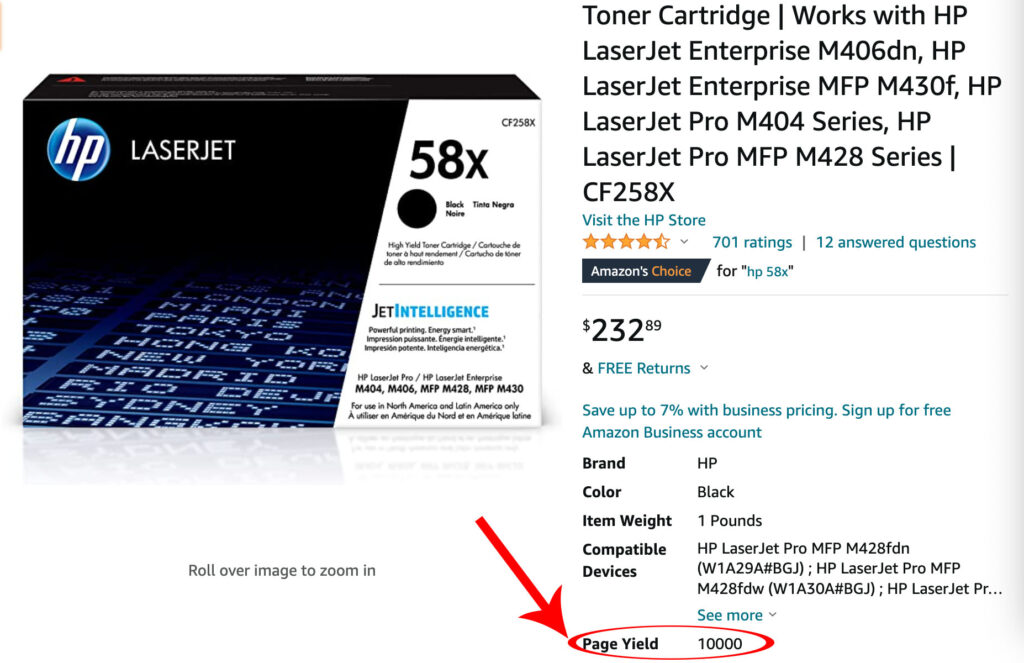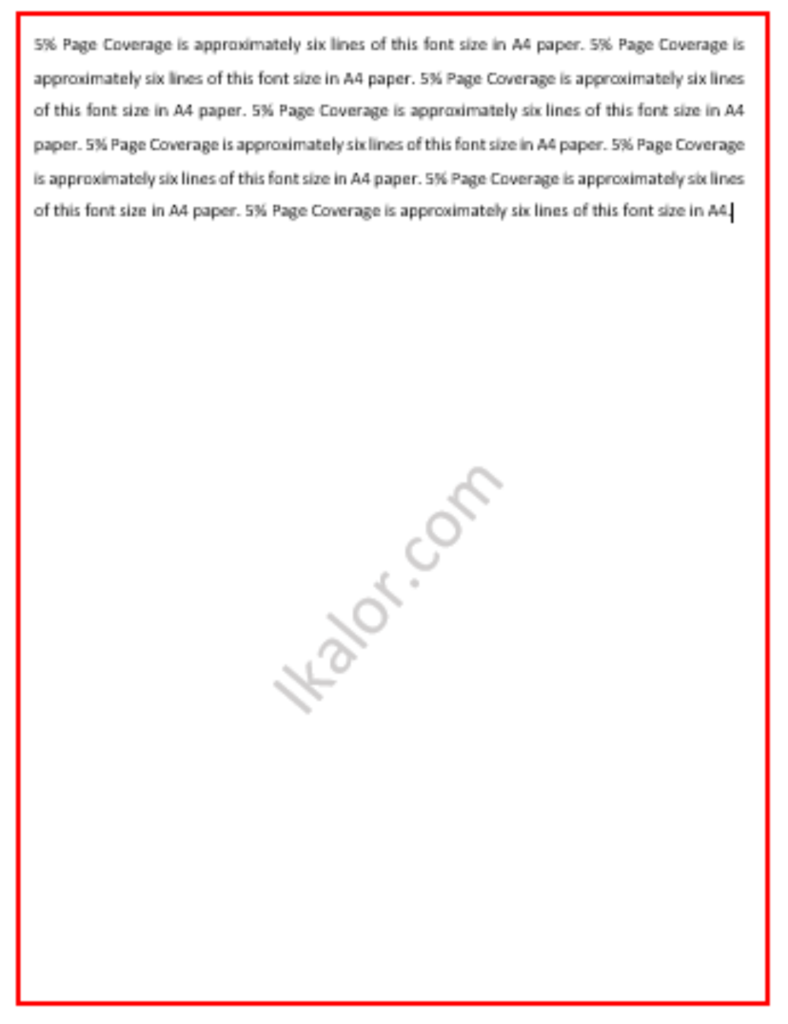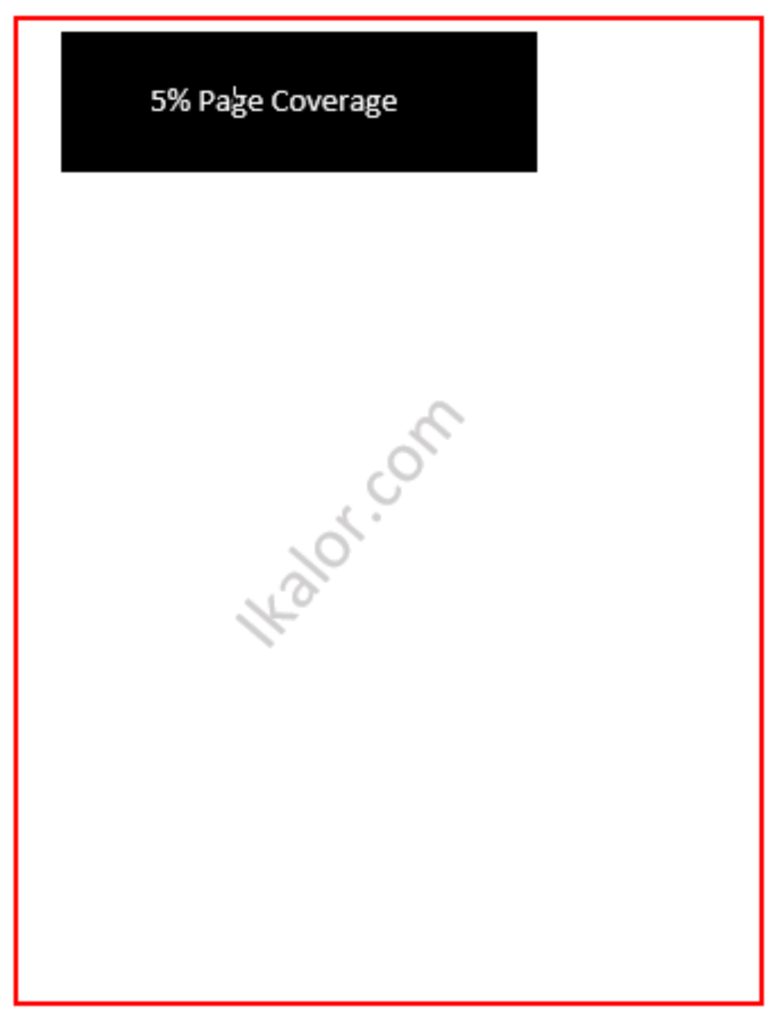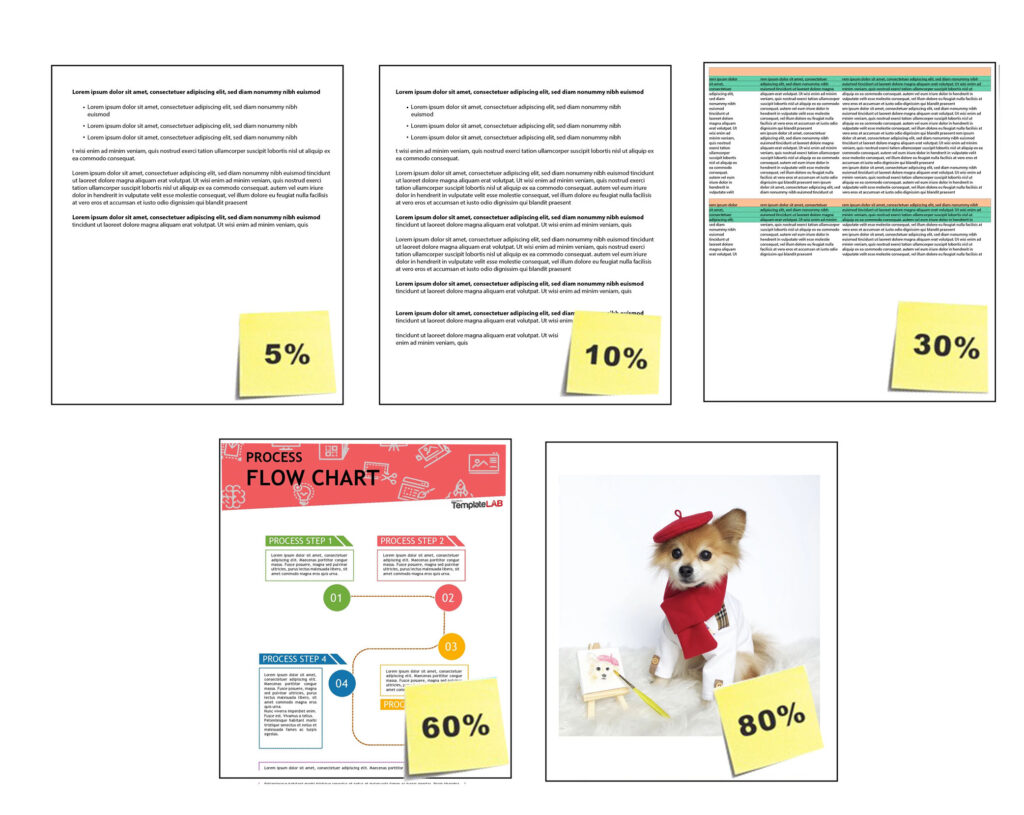A maioria dos consumidores fica frustrada quando seus cartuchos não conseguem produzir as páginas indicadas. Eles se sentem enganados pelo fabricante. Esse geralmente não é o caso. Esses consumidores não dão sentido a 5% de cobertura no contexto do rendimento da página.
É isso que abordamos no artigo de hoje.
O que é uma cobertura de 5% da página?
Páginas diferentes têm cobertura diferente. Estimar o rendimento da página do cartucho seria um desafio sem critérios. Então a Organização Internacional de Padronização (ISO) chegou para definir o padrão. Era importante para os consumidores saber a produção que eles poderiam esperar de um cartucho. Isso forneceria uma base para a tomada de decisões sobre cartuchos para comprar.

O comitê ISO concordou que o conteúdo que cobriu 5% seria igual a uma página. Isso implica que tinta ou toner devem cobrir 5% da página. Os outros 95% devem ser o espaço branco. Esta cobertura de 5% é afetada por vários fatores, como tipo de fonte e tamanho. Vamos revisar esses fatores mais tarde nesta postagem.
A cobertura difere para o texto, planilhas, e fotos.
Como uma cobertura de página de 5% parece no texto
A cobertura de 5% da página é de aproximadamente seis linhas de texto em um artigo A4. A cobertura pode variar dependendo do tamanho e tipo da fonte. Abaixo está como a cobertura de 5% se parece no papel A4.

Como uma cobertura de 5% da página parece nas planilhas?
Quando se trata de planilhas, Nove colunas e 45 linhas constituirão 5,6% de uma página. Isso é igual a 405 células sem fronteiras. Adicionar bordas de coluna e linha quase dobraria o consumo de toner ou tinta. Isso se traduziria em 10,9% de cobertura de página.
How Does a 5% Page Coverage Look in Photos ;
A maioria dos fabricantes de cartucios fotográficos não indica o rendimento da página em seus cartuchos. É porque não há padrão reconhecido com impressão de fotos. Imprimir fotos geralmente dependem do tamanho e da imagem.
Mesmo quando não há padrão, Ainda podemos conversar com nossa experiência de 10 anos na indústria de impressão. Abaixo está como a cobertura fotográfica de 5% se parece quando impressa em papel A4:

Cobertura de página e rendimento de página
A maioria dos fabricantes cita o rendimento da página de seus cartuchos com base na cobertura de 5% da página. Alguns usam 10% de cobertura, e a lógica é a mesma.

Se um cartucho oferecer um rendimento de 1600 páginas na cobertura de 5% da página, Produz 800 em cobertura de 10%. De forma similar, Ele imprimirá 400 páginas com conteúdo cobrindo 20% da página. É por isso que você mal consegue obter o número exato indicado no cartucho. Sua impressão diária vem em uma cobertura diferente.
Se você imprimir consistentemente 20% de cobertura de página, Você só atingirá um quarto do rendimento de página indicado. Os consumidores sem entender isso tendem a acusar seu fornecedor ou fabricante. Eles vão pensar que são enganados e que seus cartuchos não oferecem o que promete.
Vamos apresentar um exemplo:
Qual é o melhor entre (UM) Rendimento de 3200 páginas na cobertura de 5% da página e (B) 2400 em cobertura de 10%?
Se você correr por isso, Você pode se estabelecer com a primeira opção, E você estaria errado. Cartucho a, que oferece um rendimento de 3200 páginas em uma cobertura de 5%, daria 1600 páginas em 10% de cobertura. Isso é menor que 2400, Qual cartucho B oferece na mesma cobertura de página.
Você pode escolher facilmente o cartucho errado se não fizer as contas. Você precisa tocar continuamente na cobertura da página enquanto avalia o rendimento da página.
Cobertura de página, Rendimento da página, e custo por página
A cobertura da página não para de dar o rendimento da página. Você pode usar as mesmas informações para calcular o custo do cartucho por página. Isso forma a base para a tomada de decisão nos cartuchos para comprar. Você pode enfrentar algumas opções desafiadoras enquanto compra cartuchos.
Vamos ver algumas possibilidades
- O cartucho A produz 3000 páginas a 5% de cobertura de página e custa US $ 40
- O cartucho B produz 1200 páginas a 10% de cobertura de página e custa US $ 35
Qual oferece um custo mais barato por página?
Seria útil fazer algumas contas antes de decidir sobre cartuchos para comprar. Os números podem mentir, às vezes.
Vamos executar alguns cálculos e ver qual deles oferece menor custo de impressão:
Etapa um: converter para a mesma cobertura de página
- Cartucho A = 3000 páginas a 5% de cobertura de página
- Cartucho B = 1200 páginas a 10% de cobertura da página = 2400 páginas a 5% de cobertura da página
Etapa dois: faça as contas

Isso significa que o cartucho A oferece uma taxa de impressão mais barata. Você gastaria US $ 5 a mais para conseguir o cartucho, Mas você acabaria desfrutando de uma impressão mais acessível. Faça uma rotina fazer seu cálculo antes de comprar seu cartucho. Dessa maneira, Você faria mais lucros.
Fatores que afetam a cobertura de 5% da página
Você pode estar se perguntando:
Meus designs aparentemente cobrem 5% da página, No entanto, meus cartuchos ainda não duram como indicado?
Isso é uma preocupação comum. Você pode seguir os 5% ou 10% e ainda imprimir um número relativamente baixo de rendimento de página. Seu cartucho pode durar mais em outras ocasiões. Você pode estar se perguntando por que seus cartuchos geralmente são imprevisíveis.
Essa dinâmica pode não estar ocorrendo com base nos motivos dos fabricantes. Vamos revisar alguns fatores que afetam a cobertura da página:
1. ;Tipo de fonte
O consumo de toner difere da fonte para a fonte. Existem aqueles que são econômicos de toner. Outros usam sem piedade o toner como se não fosse negócios de ninguém.
Verificou -se que as fontes serif tendem a consumir menos toner em comparação com Sans serif. Isso ocorre porque as fontes serif têm linhas finas. A fonte gótica do século consome o mínimo. O Century Gothic usará até 30% menos toner/tinta em comparação com a fonte Arial. Outras fontes que consomem menos são calibri, Times New Roman, e Verdani. Arial também usa menos em comparação com muitos outros.
2. ;Tamanho da fonte
O tamanho da fonte também afeta a cobertura de 5% da página e o consumo de toner. Usar uma fonte maior consumirá mais toner do que os menores. Sua cobertura de 5% será menor quando você usar uma fonte maior. Evite imprimir fontes desnecessariamente enormes, a menos que seja necessário. ;
3. ;Peso da fonte
Caracteres ousados consomem mais toner. Sua impressora usará mais toner para torná -los distintos do resto. Você deve minimizar o texto em negrito se estiver imprimindo no orçamento. Itálico pode não afetar o consumo. Você pode tocar nesta opção e em itálico o que deseja destacar. O objetivo não é eliminar completamente ousado. É mais sobre reduzir o uso.
Estratégias para tirar o máximo proveito do seu toner
Fique atento à sua formatação de texto. Evite textos ousados desnecessários ou sublinhados. Itálico pode atendê -lo melhor

Selecione suas fontes com o consumo de toner em mente. Evite essas fontes com linhas grossas. O tamanho maior da fonte pode não servir bem a você, qualquer. ;
Repense o conteúdo da sua página. Torne suas fotos menores se você precisar incluí -las. Faça essas mesas sem fronteiras, Contanto que sejam legíveis.
Pesquise antes de comprar sua impressora. Os cartuchos de toner para impressoras com tambores embutidos são baratos. Você pode investir nesses e reduzir o custo da impressão. ;
Comprar cartuchos compatíveis também ajudaria. Eles são mais baratos que os cartuchos originais.
É aqui que Ikalor entra. Somos um fabricante compatível com o cartucho com sede na China. Fabricamos e fornecemos nossos produtos a diferentes partes do mundo. Você pode falar conosco e ter a oportunidade de desfrutar de preços de fábrica.
